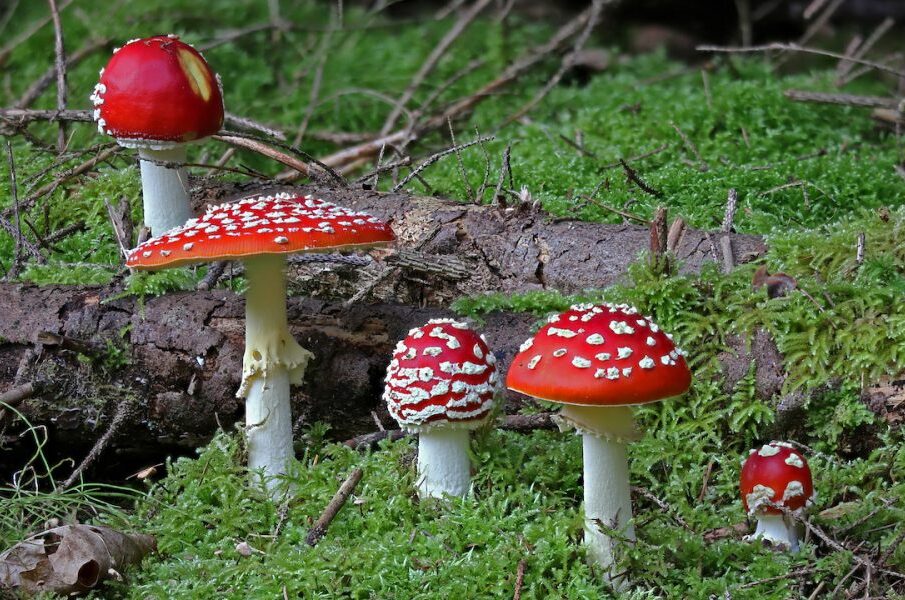Amanita Mushrooms: Exploring the Enchanting World of Fungal Medicine

If you’re intrigued by the captivating realm of Amanita mushrooms and their potential medicinal properties, you’re in for a fascinating journey. With their rich cultural history and intriguing effects, Amanita mushrooms have long been revered for their unique properties. By exploring various websites dedicated to Amanita mushrooms, like https://atpolitics.com/important-things-to-know-when-taking-amanita-mushrooms/, you can discover a wealth of information that will satisfy your curiosity and expand your knowledge. This article will delve into the enchanting world of Amanita mushrooms, exploring their history, potential benefits, and the various ways they can be consumed.
Nature’s Enchanting Fungi
Amanita mushrooms belong to the Amanitaceae family and are known for their distinctive appearance and effects. Here’s what you should know:
- They are characterized by their signature cap and stem structure, with recognizable features such as a wavy cap edge and a prominent ring or volva.
- Different species of Amanita mushrooms exist, each with its own unique characteristics and potential effects.
- Historically, Amanita mushrooms have been used for their potential medicinal and spiritual properties, often associated with shamanic practices and rituals.
The Potential Benefits
While the full extent of their benefits is still being explored, Amanita mushrooms have been associated with various potential advantages. It’s important to note that research is ongoing, and it’s always advisable to consult with a healthcare professional before considering any form of alternative medicine. Some potential benefits include:
Mind and Mood Enhancement
-
- They have been reported to have psychoactive effects, potentially offering a unique experience that affects mood, perception, and consciousness.
- Some individuals claim that Amanita mushrooms can induce a sense of euphoria, relaxation, and heightened spiritual awareness.
Pain Relief
-
- Traditional uses of Amanita mushrooms include the treatment of pain and inflammation.
- Compounds found in Amanita mushrooms, such as ibotenic acid and muscimol, have been studied for their potential analgesic properties.
Immune Support
-
- Certain species of Amanita mushrooms may contain bioactive compounds that have shown immunomodulatory properties in preliminary studies.
- These compounds may support the immune system and promote overall well-being.
Various Ways to Consume Amanita Mushrooms
Traditional Drying and Powdering
-
- A common method of consuming Amanita mushrooms is by drying them and grinding them into a fine powder.
- The powdered form can be encapsulated or mixed into food or beverages.
Brewing Tea
-
- Another traditional method is brewing Amanita mushroom tea.
- This involves steeping dried or fresh mushrooms in hot water, allowing the active compounds to be extracted into the liquid.
Tinctures and Extracts
-
- Amanita mushroom tinctures or extracts are concentrated forms of mushrooms.
- These can be taken sublingually (under the tongue) or mixed into beverages for easy consumption.
Capsules and Supplements
-
- Amanita mushroom capsules or supplements are available commercially.
- These offer a convenient and standardized way to consume Amanita mushrooms, ensuring accurate dosages.
Microdosing
-
- Some individuals choose to microdose Amanita mushrooms, consuming small amounts on a regular basis.
- Microdosing aims to experience the potential benefits without the intensity of a full trip.
Here are some alternative methods for consuming these mushrooms.
Cooking and Culinary Exploration
-
- Amanita mushrooms can also be incorporated into culinary creations, offering a unique and adventurous experience in the kitchen.
- Careful preparation and cooking methods are essential to neutralize any potentially harmful compounds and enhance their flavor profiles.
- Some culinary enthusiasts enjoy experimenting with Amanita mushrooms in dishes like soups, stir-fries, or sautés.
Topical Applications
-
- In certain traditional practices, Amanita mushrooms have been used topically for their potential healing properties.
- Preparations such as poultices or ointments may be applied to the skin to address specific concerns like skin irritations or wounds.
- However, it’s crucial to exercise caution and seek expert guidance when considering topical applications of Amanita mushrooms.
Combination with Other Herbs and Adaptogens
-
- Amanita mushrooms can be combined with other herbs and adaptogens to create customized blends and formulations.
- Some herbalists and practitioners explore synergistic effects by combining Amanita mushrooms with herbs known for their complementary properties, such as adaptogens like ashwagandha or medicinal mushrooms like Reishi.
- Combining different botanicals can offer a holistic approach to well-being, but it’s important to consult with knowledgeable professionals when exploring such combinations.
Conclusion:
Amanita mushrooms hold a certain allure, captivating us with their unique properties and potential benefits. As you delve into the world of Amanita mushrooms, remember to prioritize safety, consult with experts, and respect the potential effects they may have on your mind and body. Whether you choose to consume Amanita mushrooms through traditional methods, teas, tinctures, capsules, or explore microdosing, always approach their consumption with caution and informed decision-making. By embracing the enchanting world of Amanita mushrooms responsibly, you can embark on a journey of discovery and potential well-being.









